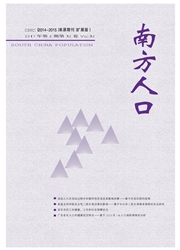

 中文摘要:
中文摘要:
本文利用2008年的RUMiC(中印农民工调查数据)构造内生选择模型分析我国男性的婚姻溢酬。OI.S结果显示,控制个人特征和单位特征后,已婚男性的工资大于未婚男性的工资,婚姻溢酬为O.360。控制了婚姻选择性和妻子工作时间内生性后,使用Hekman两步法对此分析后发现婚姻溢酬更大一些,达到了O.523;这表明我国男性的婚姻溢酬不能简单归因于选择性假说,即已婚男性比未婚男性拥有更高的不可观测的生产力。进一步的研究发现,我国男性的婚姻溢酬可以用生产力假说中的家庭内部分工理论来解释,OLS和Heckman两步法的回归结果均表明,我国男性的婚姻溢酬随妻子的工作时间上升而下降。
 英文摘要:
英文摘要:
An endogenous selection model is built based on the data of RUMiC in this paper to analyze the marriage premium of the male in China to understand the relation of men's marital status and their wage income. After their personal characteristics and their occupational characteristics are controlled, the OLS analysis show that the marriage premium of men in China is about 0.36, and the wage income of the married men is more than that of unmarried men. The Heckman model and IV model analysis shows that the marriage premium can be as larger as 0.523 after controlling the marriage selection and endogeneity of wife's working time. It is clear that he marriage premium in China cannot be attributed to selection hypothesis, i.e. the married men boast of higher productivity than the unmarried men. Further research shows that the specialization in the families can explain the marriage premium of the male, OLS and Heckman analysis both shows that the marriage premium declines with the increase of their wives' working hours.
 同期刊论文项目
同期刊论文项目
 同项目期刊论文
同项目期刊论文
 期刊信息
期刊信息
